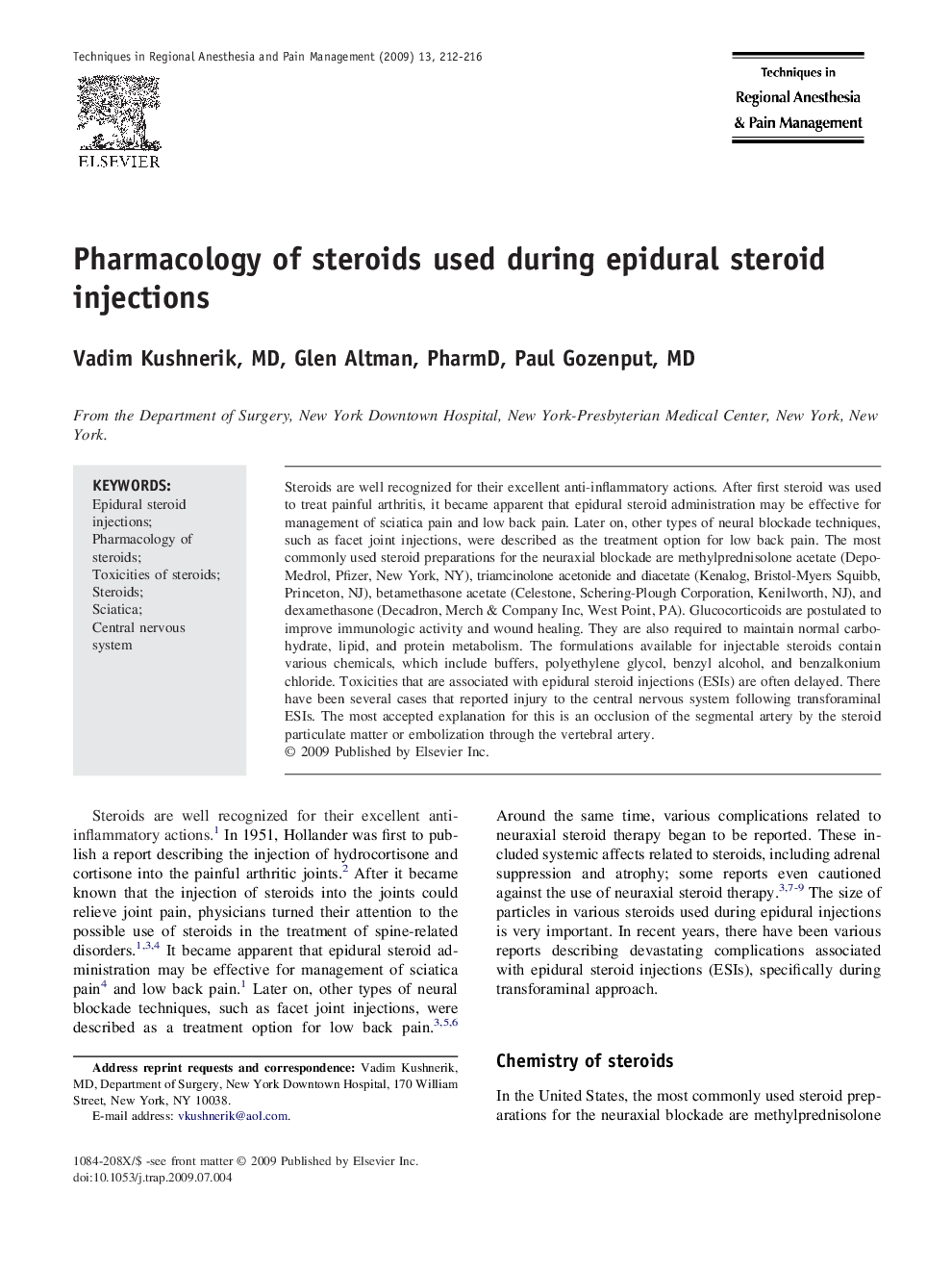| Article ID | Journal | Published Year | Pages | File Type |
|---|---|---|---|---|
| 2772460 | Techniques in Regional Anesthesia and Pain Management | 2009 | 5 Pages |
Steroids are well recognized for their excellent anti-inflammatory actions. After first steroid was used to treat painful arthritis, it became apparent that epidural steroid administration may be effective for management of sciatica pain and low back pain. Later on, other types of neural blockade techniques, such as facet joint injections, were described as the treatment option for low back pain. The most commonly used steroid preparations for the neuraxial blockade are methylprednisolone acetate (Depo-Medrol, Pfizer, New York, NY), triamcinolone acetonide and diacetate (Kenalog, Bristol-Myers Squibb, Princeton, NJ), betamethasone acetate (Celestone, Schering-Plough Corporation, Kenilworth, NJ), and dexamethasone (Decadron, Merch & Company Inc, West Point, PA). Glucocorticoids are postulated to improve immunologic activity and wound healing. They are also required to maintain normal carbohydrate, lipid, and protein metabolism. The formulations available for injectable steroids contain various chemicals, which include buffers, polyethylene glycol, benzyl alcohol, and benzalkonium chloride. Toxicities that are associated with epidural steroid injections (ESIs) are often delayed. There have been several cases that reported injury to the central nervous system following transforaminal ESIs. The most accepted explanation for this is an occlusion of the segmental artery by the steroid particulate matter or embolization through the vertebral artery.
